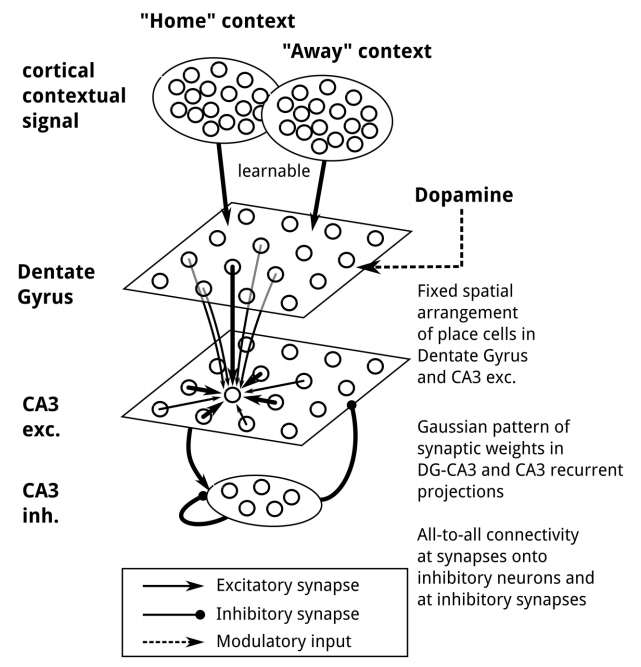Research
Computational oceanography
Oceanic currents forecast
Conditional diffusion models can forecast high-resolution ocean surface currents using historical current data and wind forecasts. The model maintains stability over 10-day autoregressive forecasts and provides uncertainty quantification for operational decision-making in applications like oil spill response.

Artificial Intelligence
Reservoir computing
Reservoir computing studies the dynamical properties of recurrently connected populations of neurons. Their rich dynamics allow to represent and learn complex tasks currently out of reach of the classical machine learning methods, but also allow to better understand brain activities.

Deep reinforcement learning
Reinforcement Learning (RL) is a machine learning framework studying how to derive optimal policies from reward signals. Coupled with deep neural networks, it became the most promising approach to general artificial intelligence.

Geometric deep learning
While deep learning approaches have been very successful with structured Euclidian data (image, sound, text), it is still very difficult to use them with non-Euclidian data such as graphs or 3D meshes. Within the ML@Karoprod project, we developed novel techniques allowing to leverage the speed and representational power of deep networks to accelerate the prediction of parameterized FEM simulations.
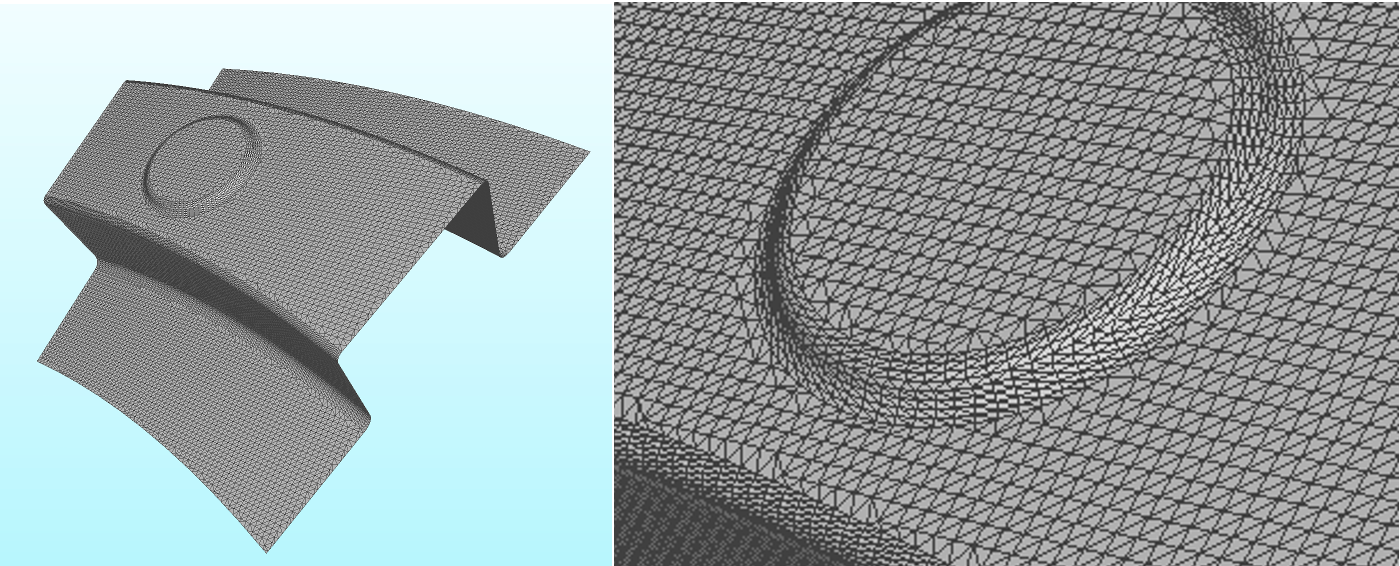
Cyber-security and anomaly detection
Computer systems must be protected against cyber attacks from inside and outside. To guarantee faultless processing, the system must be monitored to detect problems and anomalous system behavior early enough. Anomaly detection methods can be applied to detect such events in a self-supervised manner. In the WAIKIKI project, we used a special kind of Tranformer, the Compact Convolutional Transformer (CCT), on project-specific log data in order to learn the distribution of valid log tokens and detect anomalies.
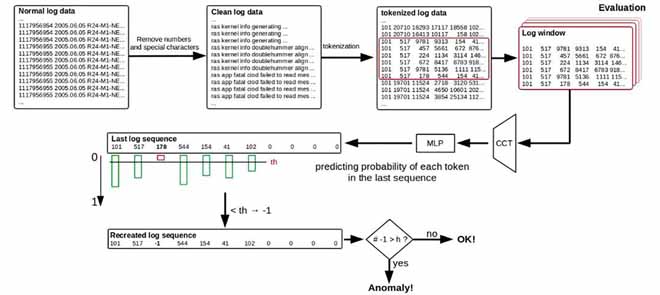
Neuroinformatics
Neurosimulator ANNarchy
I developed with Helge Dinkelbach ANNarchy (Artificial Neural Networks architect), a parallel simulator for distributed rate-coded or spiking neural networks. The definition of the models is in Python, but the library generates optimized C++ code to actually run the simulation on parallel hardware, using either openMP or CUDA.
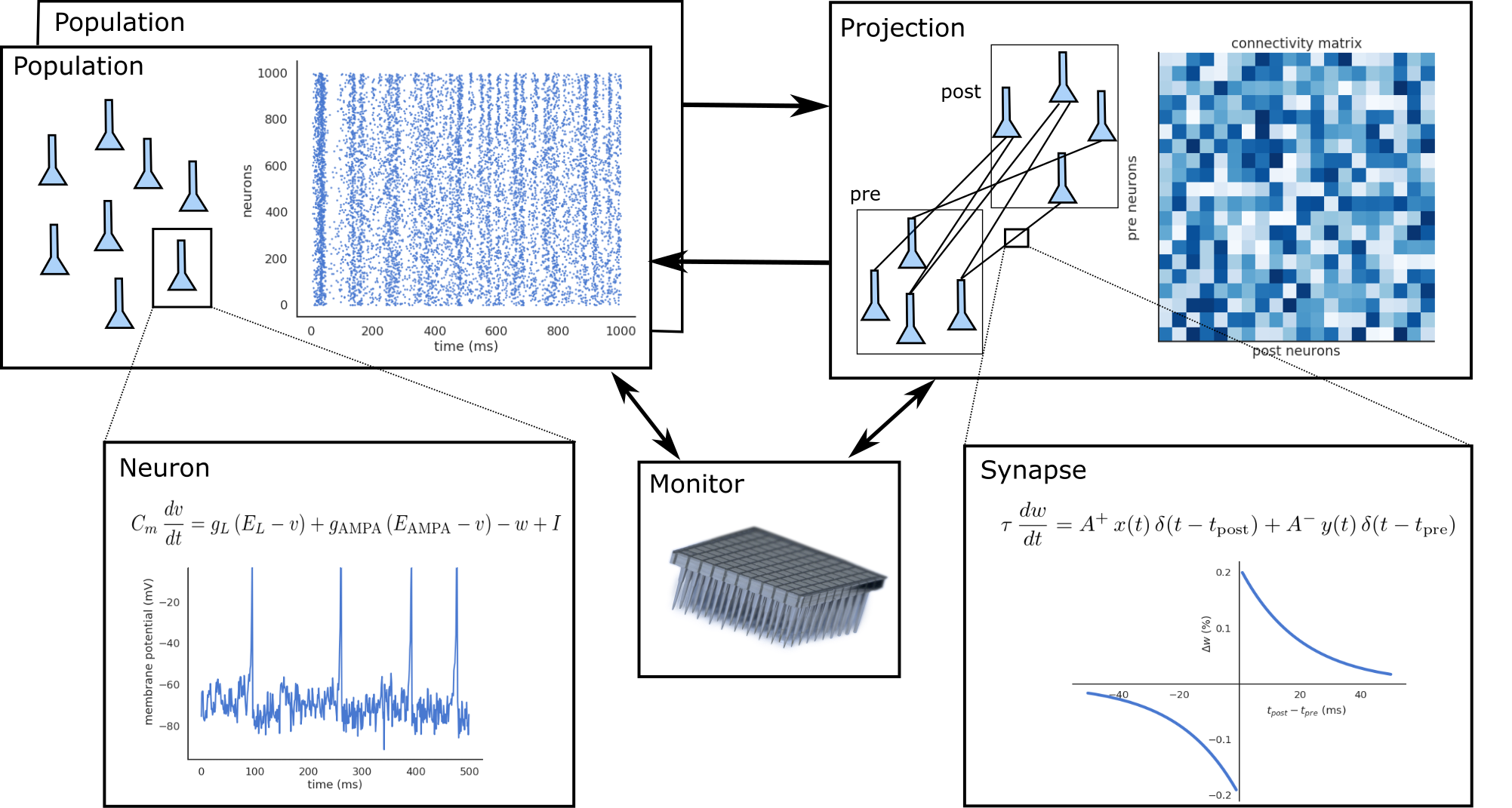
Computational neuroscience
Basal Ganglia
The Basal Ganglia (BG) are a set of nuclei located in the basal forebrain, receiving inputs mostly from the cerebral cortex and projecting to various motor centers, as well as back to the cortex through the thalamus, forming a closed-loop. It is involved in major functions such as reinforcement learning, habit formation, planning and motor control, but also in diseases such as Parkinson’s disease or Tourette syndrome.
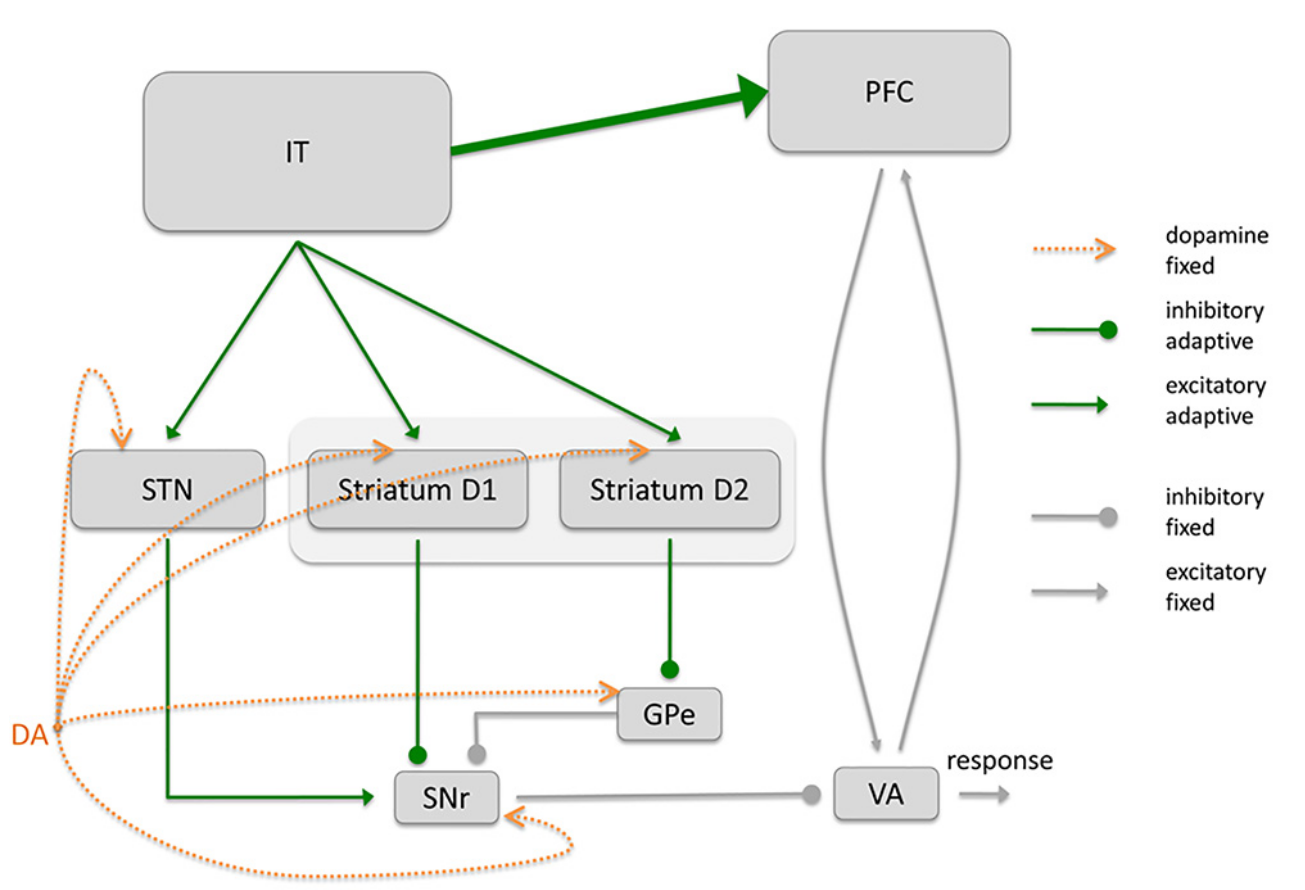
Dopaminergic system
The dopaminergic system is composed of the ventral tegmental area (VTA) and the substantia nigra pars compacta (SNc). The neurotransmitter dopamine (DA) released by neurons in these two small areas exerts a strong influence on neural excitability and plasticity in many brain areas: mostly the basal ganglia (BG), but also the prefrontal cortex, the hippocampus or the amygdala.
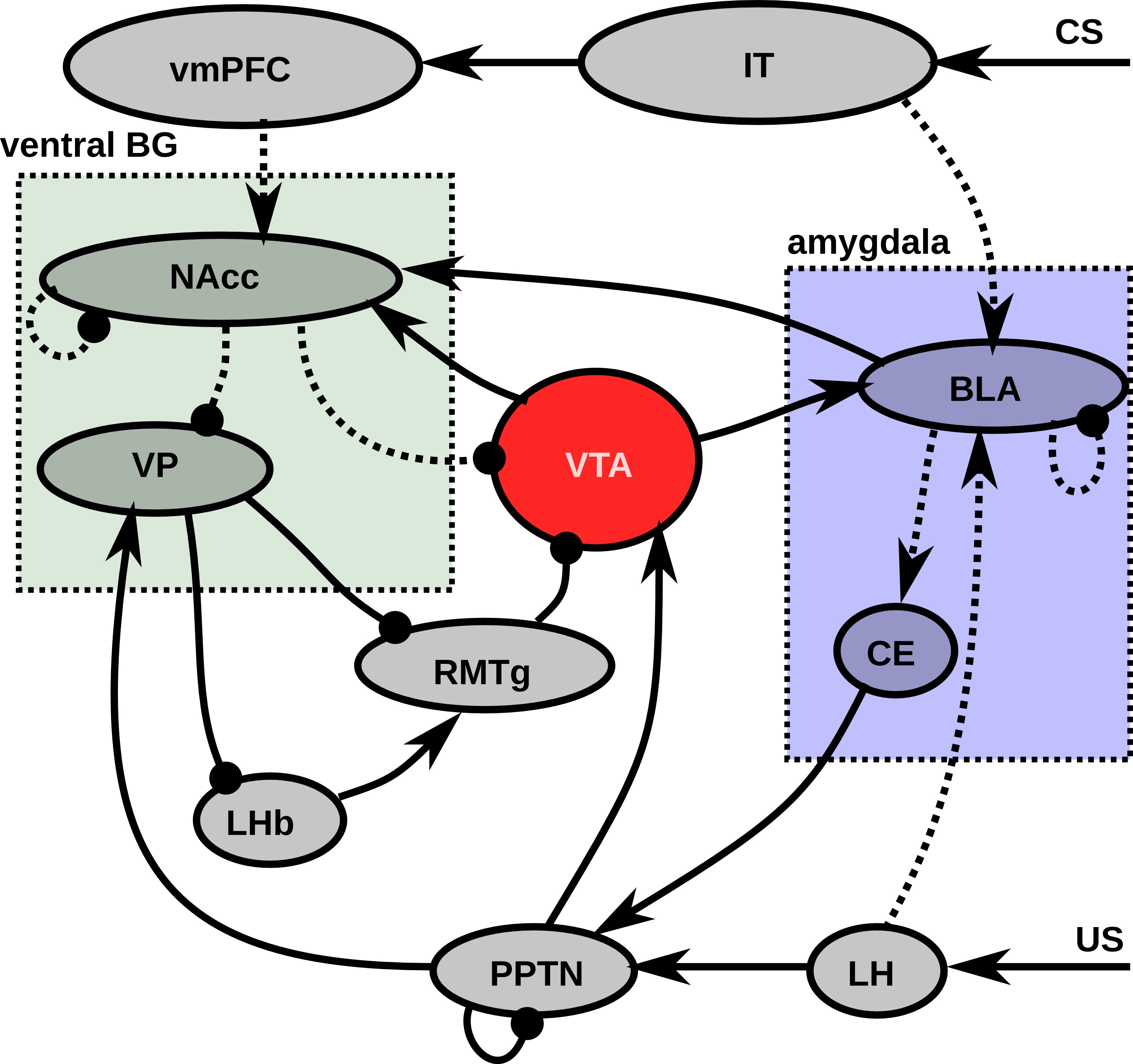
Hippocampus
The hippocampus is a key structure for episodic memory and spatial navigation. A fundamental step in hippocampus research was the discovery of place cells, which fire whenever an animal traverses a certain location known as the place field (O’Keefe and Nadel, 1978). At rest, place cells exhibit brief periods of fast oscillations termed sharp wave-ripples. During these events, place cell activity shows sequential patterns called forward replay and reverse replay: time-compressed, and sometimes time-reversed, reproductions of previously experienced sequences. Spatial experiences stored in the hippocampus can therefore be recalled at will during behavior.
